


JULY 2024




JULY 2024
Operated in support of the Kenya Wildlife Service, Sheldrick Wildlife Trust's Aerial Unit monitors for illegal activity from the skies and offers rapid response assistance in anti-poaching operations, human-wildlife con�ict, veterinary treatments, orphan rescues, and all manner of �eld emergencies.
This report details Aerial Unit activities for July 2024
27,678
Hours �own:
214
27,707
Kilometres �own: Tsavo East, Tsavo West, Chyulu Hills, Shimba Hills NR, South Kitui NR, Galana Ranch, Kulalu Ranch, Kuranze Ranch, Shumbaland, Kishushe Ranch, Mbulia Ranch Areas patrolled:
There were several veterinary cases attended to in July, many involving snare victims, including snared two elephants, a buffalo, and a zebra One of the elephants was �rst sighted by guests at Satao Camp in Tsavo East before being reported to SWT The KWS/SWT Mobile Vet Unit sprang into action, but unfortunately, by the time they arrived, the elephant had moved away from the waterhole and could not be found so a helicopter was deployed to assist in the search. The bull elephant was located and darted. The snare had dug deep into the left ankle of the elephant, but fortunately, the bull has a good prognosis for recovery
The other snared elephant had been seen nine months prior with a scar around his front left ankle, which indicated a possible snare, but he vanished before a treatment could take place. Having found the elephant once more, it was clear the snare had been fully enveloped under the ankle skin, creating the unique scar the pilot recognised Once darted, the KWS/SWT Mobile Vet Unit found a small piece of cable embedded in the �esh. Pulling on the cable, the full length unwound from around the ankle and slowly emerged from the tiny wound. One can only image the pain that this bull has been living with However, with the snare removed, he is expected to make a full and speedy recovery
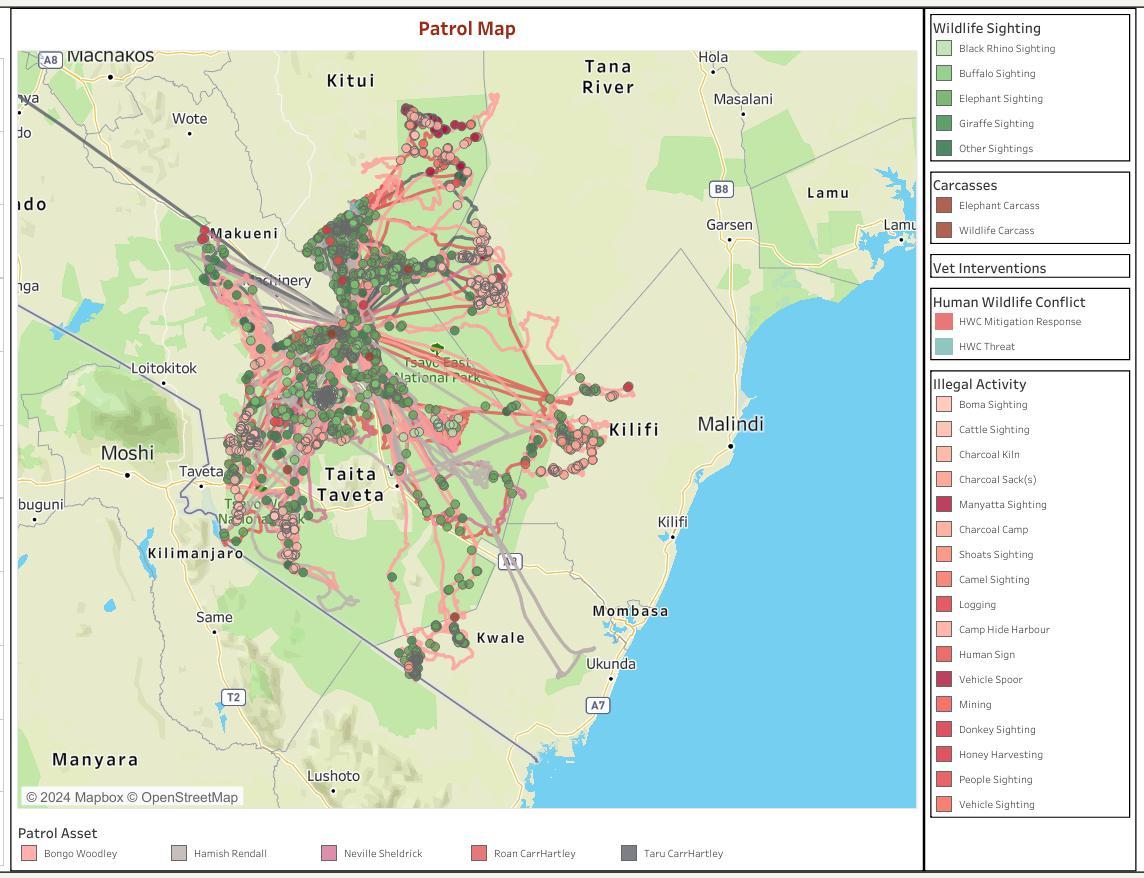

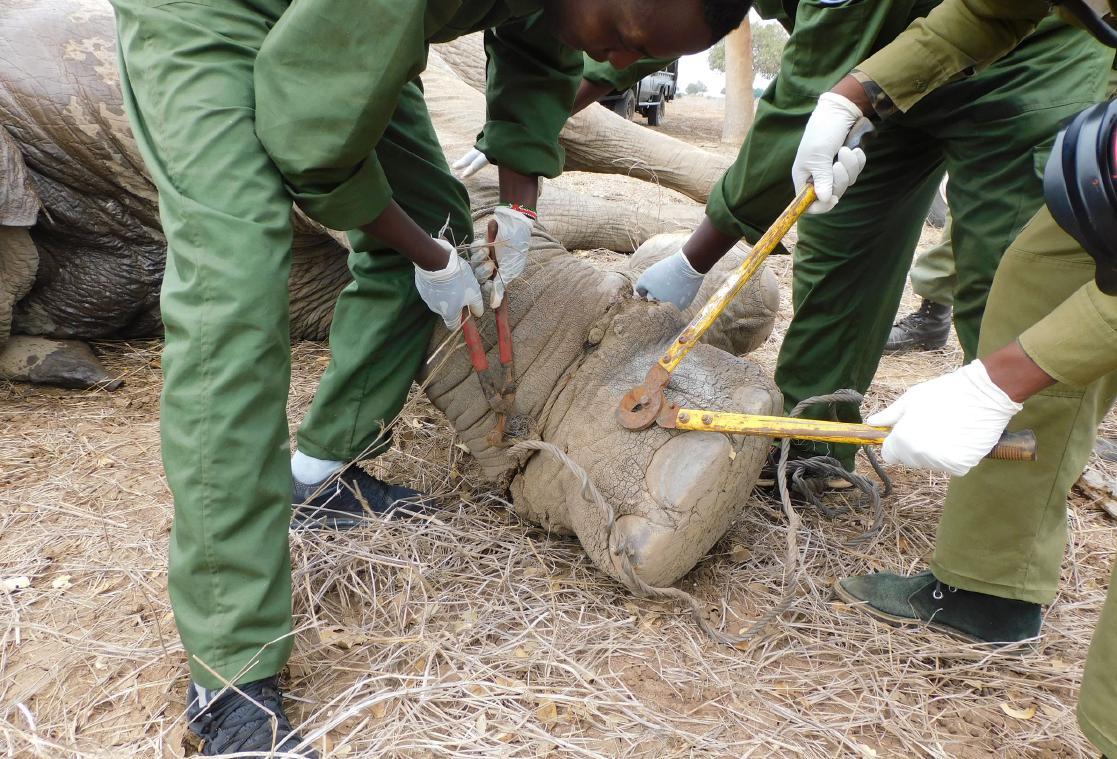
Other snared animals included a buffalo �rst seen by ground teams and later located by a �xed-wing with a snare wrapped tightly around its lower jaw. Once found from the air, a helicopter and vet were deployed to dart the buffalo and successfully remove the snare Finally, a zebra was spotted near the Tsavo River bridge with a snare around its neck With the help again of a helicopter and the Vet Unit, the snare was also successfully removed
Three other elephants were attended to in July. The �rst was a bull the team spent the last month searching for. Once again, ground teams detected tracks of an elephant that appeared to be dragging either its leg or a log It turned out to be the former. The Vet Unit was transferred to our Kaluku HQ with a �xed-wing aircraft and deployed with a helicopter to dart the bull. However, upon viewing the elephant up close, no visible injury could be seen. Because of the added risk due to the elephant’s size, it was decided to avoid darting The Vet Unit and SWT helicopter also attended to a bull who had a severe �ghting injury on his front leg where a rival’s tusk had pierced straight through the leg. The wound was treated as best as possible, but the prognosis is guarded due to the amount of damage done. Monitoring of the elephant’s condition is being carried out.
The �nal case did not have a happy ending, unfortunately. The SWT helicopter and Vet Unit responded to a callout for an injured elephant near Lake Jipe. The patient was very weak and, early in the treatment, it passed away. The cause, it turned out, was a large cyst in the abdomen
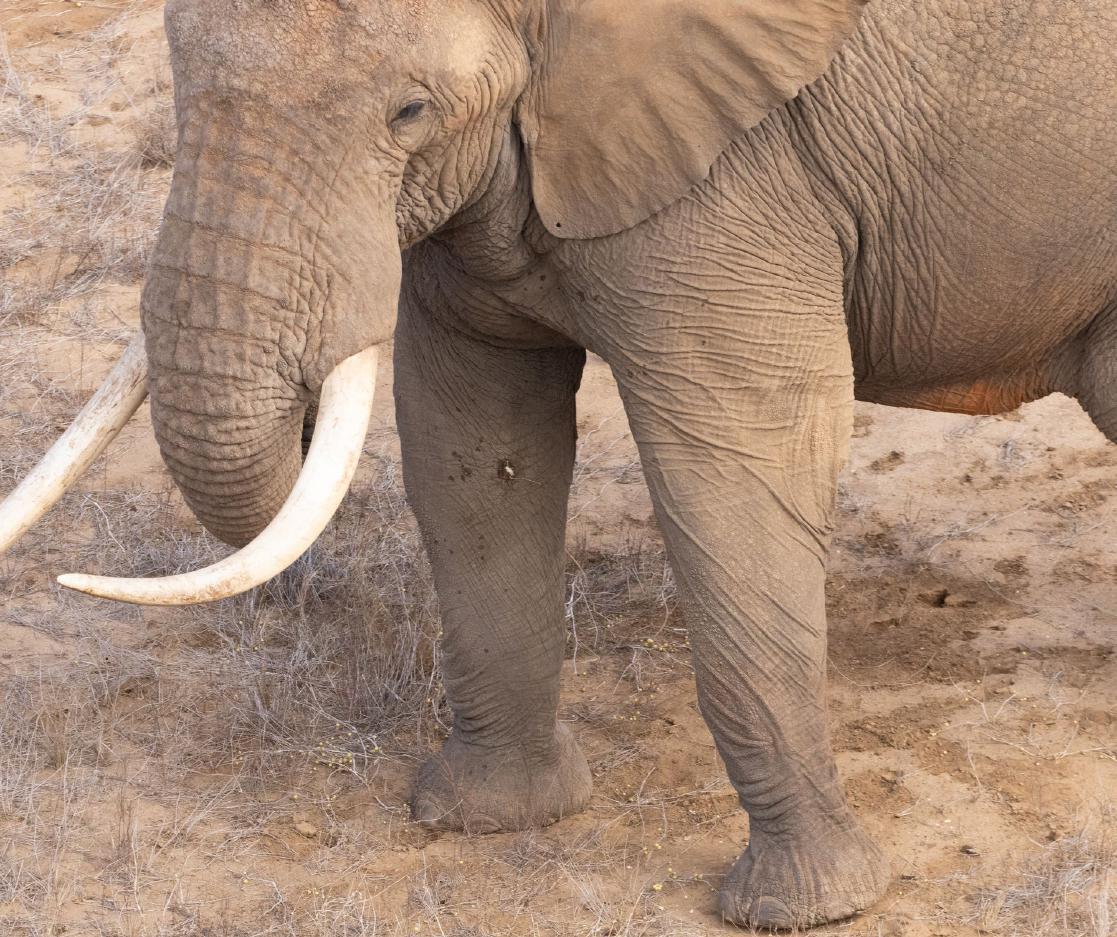


The Aerial Unit only responded to two cases of human-elephant con�ict during July. One of these was well outside of the Tsavo Conservation Area in the community land adjacent to Shimba Hills National Reserve, where a herd of �ve bull elephants was being chased by an angry mob To avoid injury to either the elephants or the people, SWT quickly scrambled a helicopter to help guide the elephants back into the Reserve and away from human settlement
While illegal mining is a lesser-observed illegal activity, there has been a slight uptick in Tsavo West. Two instances of fresh mining activity were sighted in July In one instance, a helicopter was deployed to investigate a fresh miner’s harbour seen during an aerial patrol in the Park. Upon landing, a large amount of food (enough for 3-4 men for 2+ weeks) was found along with mining equipment stashed under a plastic sheet. Also in the camp was a live pangolin which had been captured and kept in a sack These highly endangered creatures are traded for their scales, which are used in Chinese medicine The pangolin was kept for a short time to check on its condition and facilitate its rehydration, before being successfully released back into the wild in a suitable place.
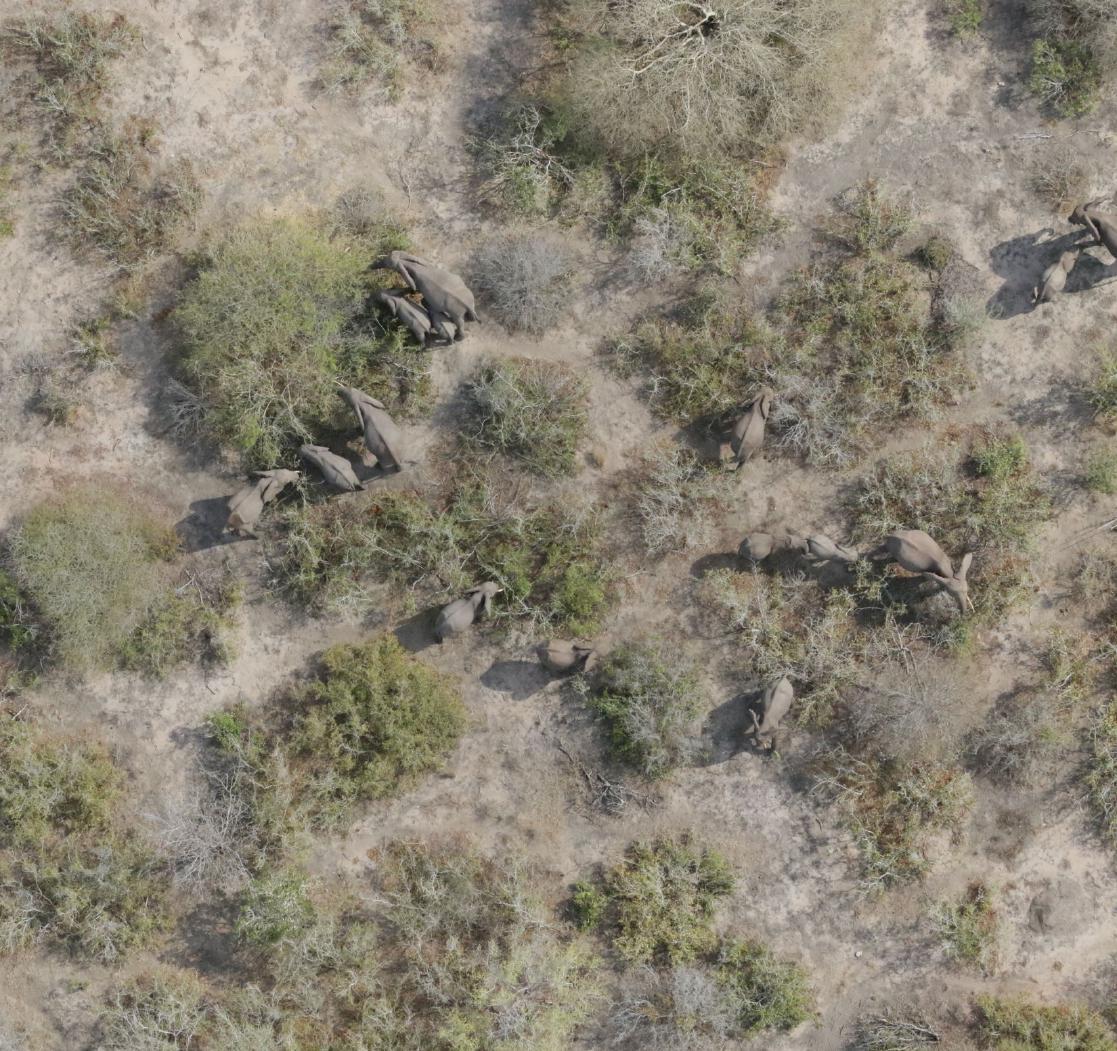

Only two elephant carcasses were discovered in July, both presumed to be natural deaths and both old carcasses. The tusks were retrieved and handed over to KWS for safekeeping. Some poaching activity (for bushmeat) was observed, including various camp�res and harbours Ground sweeps during helicopter patrols also revealed a small number of wire snares and on one occasion fresh footprints of a suspected poacher The Canine Unit followed the tracks for several hours, but the trail eventually went cold.
Fortunately, only one �re was attended to by the Aerial Unit The �re began along the edge of the Mombasa Highway possibly ignited by a discarded cigarette and spread into the Park. One of the SWT’s �xed-wing aircrafts provided aerial command and support while ground teams fought the �re successfully.
Finally, a callout came in for an urgent medivac out of Tsavo East A visitor’s vehicle had rolled in the Park and one occupant was badly wounded. Our helicopter arrived at the scene and secured the patient on a stretcher before transporting him to Voi, where he was transferred to an ambulance and taken to hospital for care.
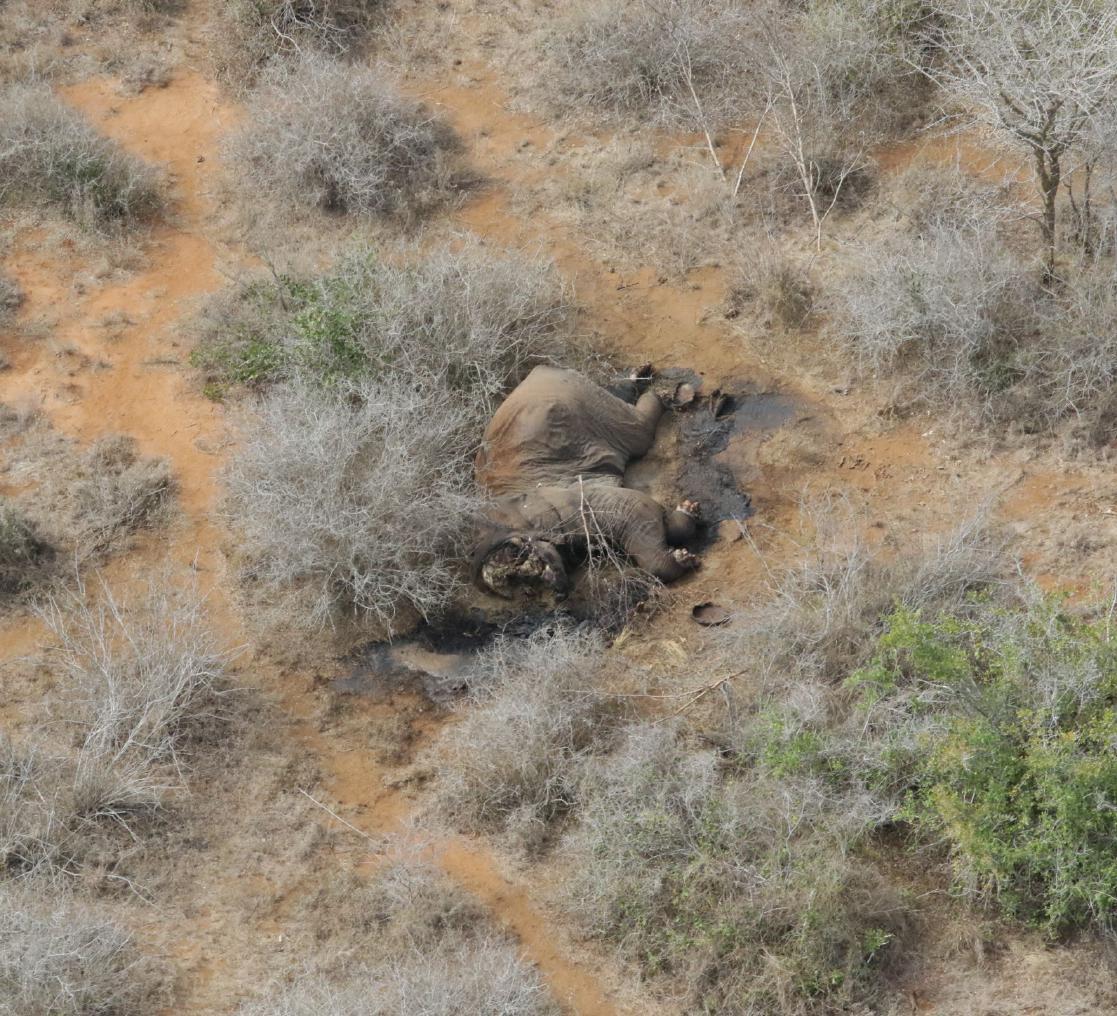
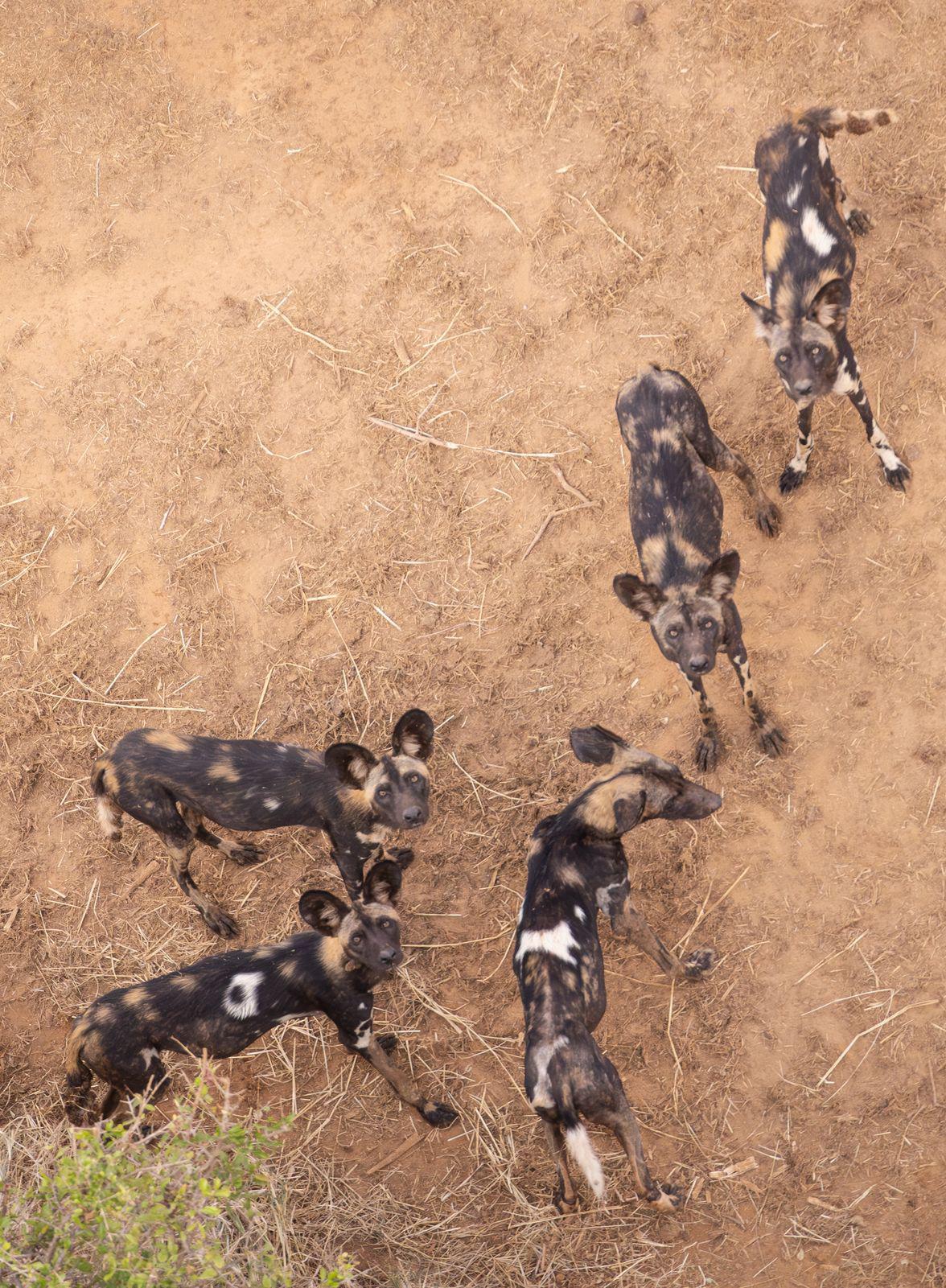
As the Park dries off and vegetation opens up, our pilots have been treated to an increasing number of big cat sightings, including cheetah, leopard and even a lion kill. Most excitingly, though, was the sighting of a newborn (about a month old) rhino calf in Tsavo East Every new birth in this extremely fragile population is a celebration
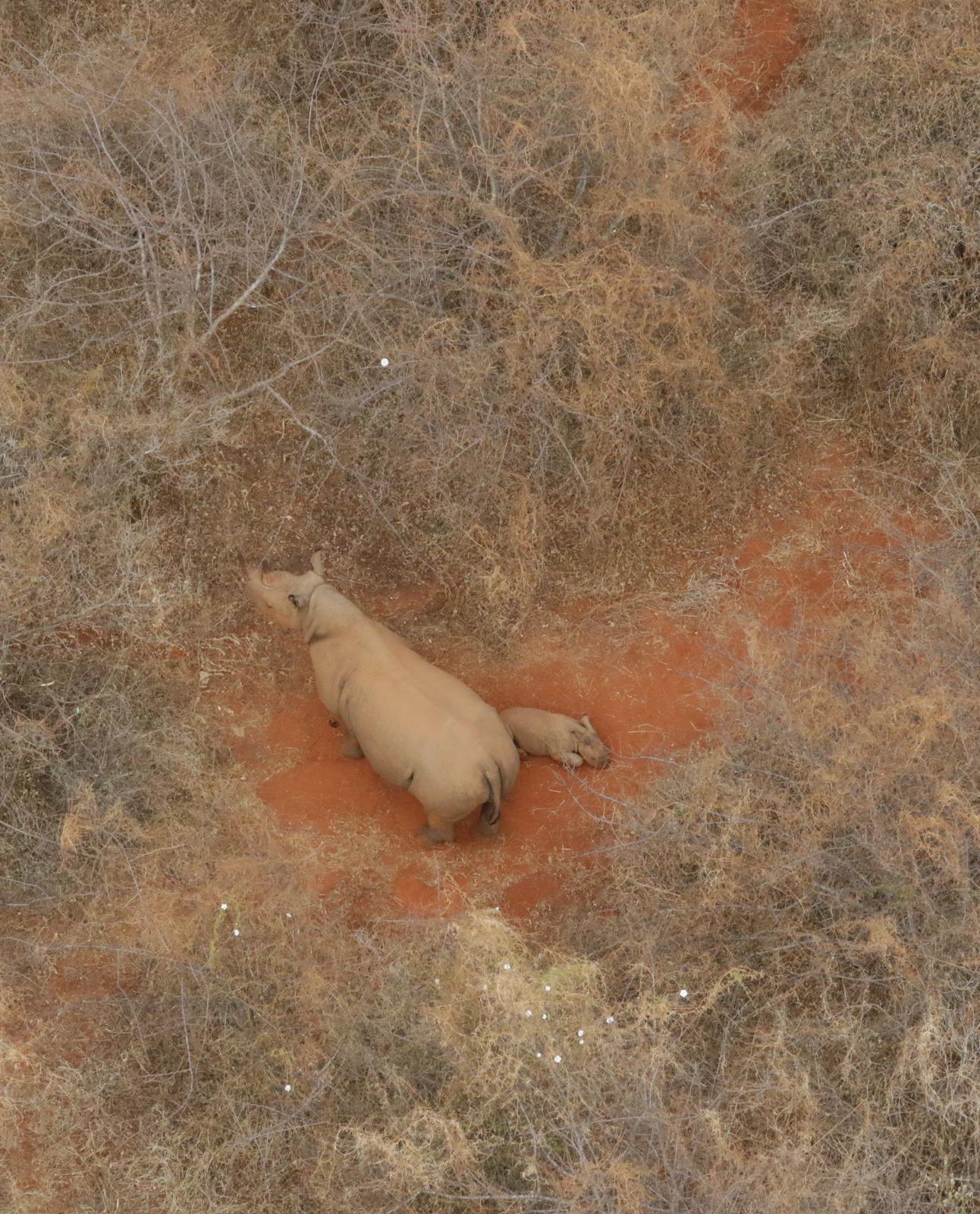



The Aerial Unit, as with all Sheldrick Wildlife Trust's conservation projects, is a donorfunded initiative Thank you to our global supporters, who help us secure Kenya's habitats for the future and make an impact in the �eld, each and every day